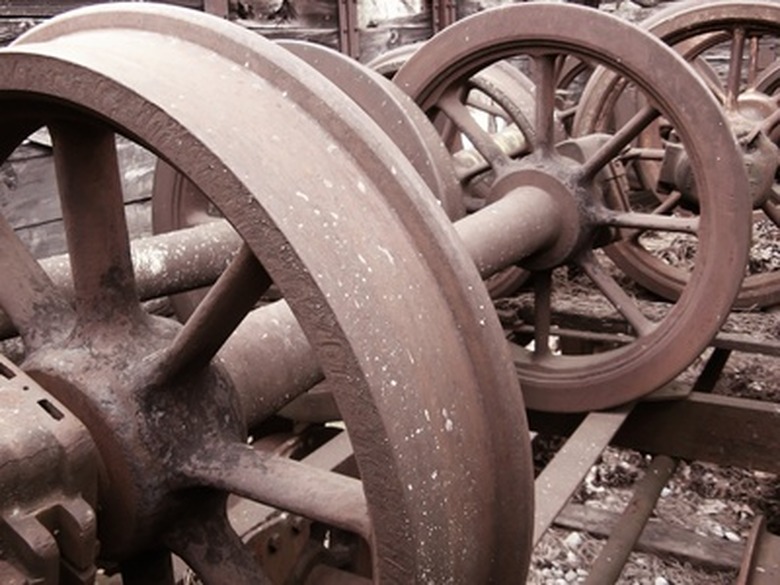Wheel & Axle Function
The wheel and axle, a form of simple machine, applies effort and resistance to lift or move objects and people. The lifting and moving is performed by multiplying speed or force.
Parts
Parts
This simple machine consists of a large rounded part (the wheel) and a smaller rounded rod (the axle). The wheel spins around the axle.
Types
Types
One type of wheel and axle moves people around via bicycles, cars and Ferris wheels. The type that moves objects can be seen on screwdrivers and drills as well as cranes.
How the Wheel and Axle Works
How the Wheel and Axle Works
Wheels and axles work either by draping rope around a grooved wheel to lift objects (pulleys) or by rotating the wheel around a fulcrum (axle) to move objects horizontally. Effort force can be applied to the wheel (e.g., door knob) or the axle (e.g., car tires).
Speed Multipliers
Speed Multipliers
Large forces applied to the axle cause the wheel to travel rapidly, triggering an automobile to drive faster, for example. In this case the wheel and axle perform as a speed multiplier.
Force Multipliers
Force Multipliers
Applying minor forces to the wheel so it travels a longer distance generates a greater force in the axle so it turns a smaller distance. The wheel and axle (e.g., windmill, spindle) is a force multiplier.
Cite This Article
MLA
Whetzel, Joan. "Wheel & Axle Function" sciencing.com, https://www.sciencing.com/wheel-axle-function-7311883/. 24 April 2017.
APA
Whetzel, Joan. (2017, April 24). Wheel & Axle Function. sciencing.com. Retrieved from https://www.sciencing.com/wheel-axle-function-7311883/
Chicago
Whetzel, Joan. Wheel & Axle Function last modified March 24, 2022. https://www.sciencing.com/wheel-axle-function-7311883/
